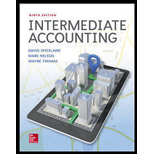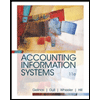
Dollar-Value-LIFO: This method shows all the inventory figures at dollar price rather than units. Under this inventory method, the units that are purchased last, are sold first. Thus, it starts from the selling of the units recently purchased and ending with the beginning inventory.
To Determine: the cost-to-retail percentage for the inventory on hand at 1/1/2018.
Explanation of Solution
Determine the cost-to-retail percentage for the inventory on hand at 1/1/2018.
Conclusion:
Therefore, the cost-to-retail percentage for the inventory on hand at 1/1/2018 is 75%.
To Determine: the cost-to-retail percentage for the inventory on hand at 12/31/2018.
Solution:
Determine the cost-to-retail percentage for the inventory on hand at 12/31/2018.
Working notes:
Calculate the amount of ending inventory at base year retail prices.
Calculate the amount of inventory layers at base year retail prices.
Calculate the amount of inventory layers at current year retail prices.
Calculate the amount of inventory layers converted to cost (Base).
Calculate the amount of inventory layers added at current year retail (2018).
Calculate the amount of inventory layers added at current year cost (2018).
Conclusion:
Therefore, the cost-to-retail percentage for the inventory on hand at 12/31/2018 is 80%.
To Determine: the ending inventory for 2019.
Solution:
Calculate the amount of estimated ending inventory for 2019.
| Details | Cost ($) | Retail ($) |
| Beginning inventory | 22,792 | 33,600 |
| Add: Net purchases | 60,000 | 88,400 |
| Goods available for sale – Including beginning inventory | 82,792 | 122,000 |
| Less: Net sales | (80,000) | |
| Estimated ending inventory at current year retail prices | 42,000 | |
| Estimated ending inventory at cost | 26,864 |
Table (1)
Working notes:
Calculate current year layer (2018) cost-to retail percentage.
Calculate the amount of estimated ending inventory at cost.
| Ending inventory at dollar-value LIFO retail cost | ||||
| Step 1 | Step 2 | Step 3 | ||
| Ending inventory at year-end retail prices ($) | Ending inventory at base year retail prices ($) | Inventory layers at base year retail prices ($) | Inventory layers converted to cost ($) | |
| 42,000 (refer Table 1) | 35,000 (9) | 28,000 (Base)(3) | 21,000 (11) | |
| 2,000 (2018)(4) | 1,792 (7) | |||
| 5,000 (2019)(10) | 4,072 (12) | |||
| Total ending inventory at dollar-value LIFO retail cost | $26,864 | |||
Table (2)
Calculate the amount of ending inventory at base year retail prices.
Calculate the amount of inventory layers at current year retail prices.
Calculate the amount of inventory layers converted to cost (Base).
Calculate the amount of inventory layers converted to cost (2019).
Want to see more full solutions like this?
Chapter 9 Solutions
INTERMEDIATE ACCOUNTING (LL) W/CONNECT
- Financial Accounting Question need helparrow_forwardWhat are the possible actions to take when an authority figure/company puts you in a compromising situation. Provide examples such as personal experience or recent events.arrow_forwardPlease show me the correct way to solve this financial accounting problem with accurate methods.arrow_forward
- Can you explain this general accounting question using accurate calculation methods?arrow_forwardwhat is the duty of management of a company? What would happen to shareholder value if they immediately implemented the new regulations? What would happen to shareholder value if they waited but at least informed the shareholders of the impact? Which would be better?arrow_forwardA company analyzing its break-even point for a product with a selling price of $85 per unit. The variable cost per unit is $53, and the fixed costs are $187,000 per year. If the company wants to achieve a profit of $76,000, how many units must it sell to meet this profit goal? (Round answer to nearest unit)arrow_forward
- Hi expert please given correct answer with accounting questionarrow_forwardI am looking for the correct answer to this general accounting question with appropriate explanations.arrow_forwardCould you help me solve this financial accounting question using appropriate calculation techniques?arrow_forward
- Subject General Accounting: Exxon Company has a DSO of 22 days. The company's average daily sales are $45,000. What is the level of its accounts receivable? Assume there are 365 days in a year.arrow_forwardMCQarrow_forwardCan you explain this general accounting question using accurate calculation methods?arrow_forward
- Business/Professional Ethics Directors/Executives...AccountingISBN:9781337485913Author:BROOKSPublisher:Cengage
 Accounting Information SystemsFinanceISBN:9781337552127Author:Ulric J. Gelinas, Richard B. Dull, Patrick Wheeler, Mary Callahan HillPublisher:Cengage Learning
Accounting Information SystemsFinanceISBN:9781337552127Author:Ulric J. Gelinas, Richard B. Dull, Patrick Wheeler, Mary Callahan HillPublisher:Cengage Learning


